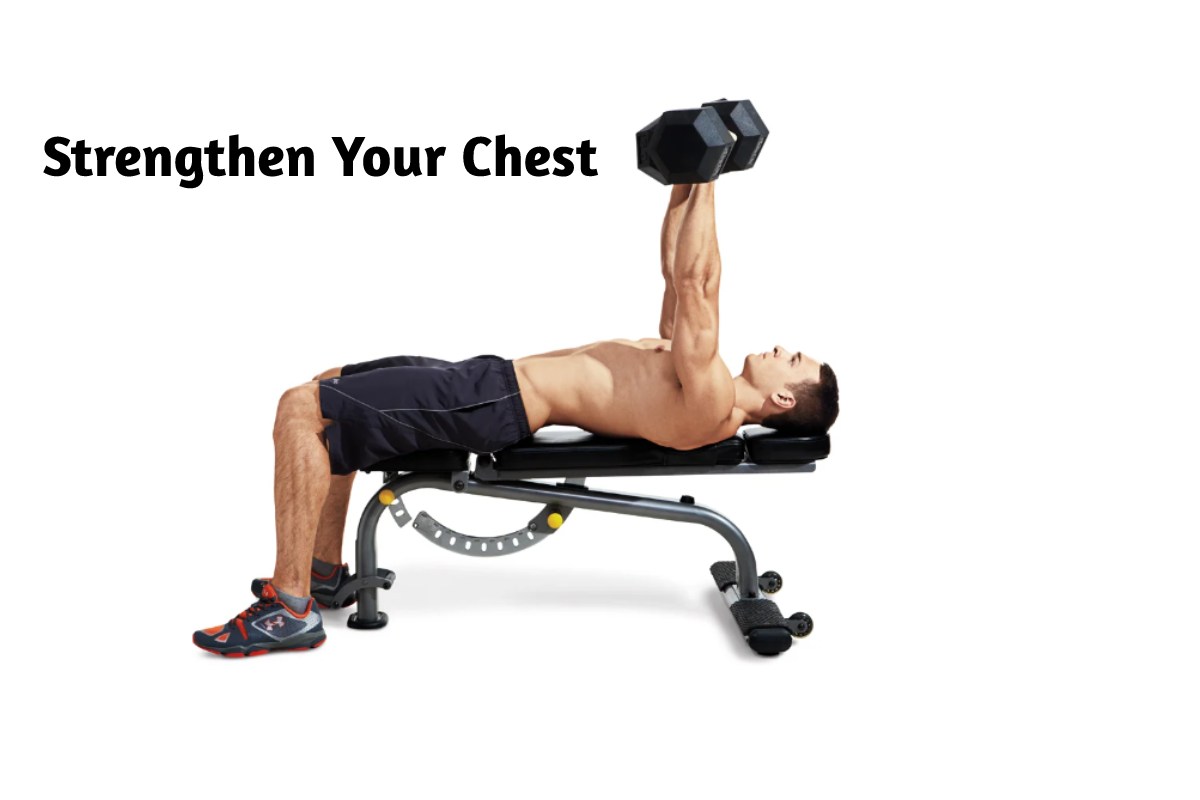Strengthen your chest: For women who do not like to train the chest, gaining strength in this musculature means more significant support for the breast, and this means that, in addition to keeping it in place, posture improves and back pain decreases. Therefore, the myth that running makes the breasts sag is undoubted because runners do not strengthen these muscles.
Another interesting myth is that the pectoral will divide into three parts, with all the pectoral fibres lengthening and shortening in the same direction (horizontal). However, some insertions make the muscles act more or less from the angulation performed: in this case, above the shoulder line, there is a more significant action in the portion inserted into the clavicle.
Movements below the shoulder line favour activating the portion inserted into the sternum (bone in the middle of the chest).
Also Read: What are the 10 Best Toned Legs Exercises ?
Table of Contents
Six Exercises To Strengthen Your Chest
1. Arm Flexion
The most basic exercise to do anywhere is an excellent way to strengthen your chest and still work your core. With your arms extended, performing the elbow flexion, go down an angle of 90 and up to the starting position.
There are variations with the knee resting on the floor or the arms on a bench to lessen the load.
In addition to facilitating variations, you can add overload, as with plyometric flexion. For example, in the elbow extension movement, the force is so great that the individual has to lose contact of the hands with the ground and land, cushioning the fall. Another way to make it difficult is by elevating your feet on a bench or step so that your body weight weighs down your arms. In this exercise, the most activated portion is sternocostal.And also serach Squat Bar
- Bench Press
It is the most traditional chest training exercise and can be The bench press is a push-up with the trunk supported on the bench; that is, the overload on the chest is more controlled, and there is less activation in the core. Lying on a straight bench with your arms extended, hold the bar just beyond your shoulders and under your chest, bend your elbows, bring the bar towards your chest and lift to the starting position.
3. Incline Bench Press
The incline bench press is a significant variation to recruit activation of the clavicular portion above the chest and shoulders. For example, sitting on a bench with an incline at 45, with arms extended, hold the bar a little beyond the shoulders and under the chest line, bend the elbows bring the bar towards the collarbone and raise it to the starting position.
4. Parallels – Strengthen Your Chest
Often confused as an exercise just for the triceps, the parallel is excellent for the chest because it works on sheer strength and can do with body weight. With the support of your hands on two bars, keep your arms extended and flex until you reach your shoulders at a span of the bar, and push your body up, returning to the starting position. (sternocostal portion). And also search Body Composition
5. Crucifix With Dumbbells
Also known as a classic chest exercise, the crunch tends to activate the triceps less and focus strength only on the chest. Lying on the bench, hold the dumbbells with the palms of your hands facing the other, and open your arms, keeping a cadenced descent to the shoulders line. It is unnecessary to go beyond this line to avoid straining the shoulder and return to the starting position by raising your arms. It will not need to keep your arms fully extended, do the movement with your elbows semi-flexed. There are variations between inclined, straight and declined, and the pulleys.
6. Peck Deck Or Pectoral Adduction
It is the most specific exercise for the chest, segmenting the muscles and using only the shoulder joint (monoarticular). You need a particular weight training device with support on both elbows to perform this. Sitting with your elbows in line with your shoulder and leaning on the backrests, close your arms, bring your elbows together and return to the starting position, remembering that the amplitude does not need to be beyond the trunk line.
Also Read: Causes of Heel Pain After Running

